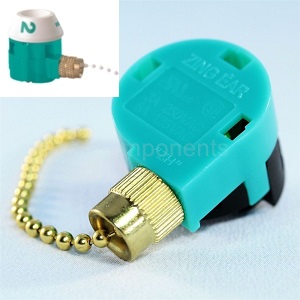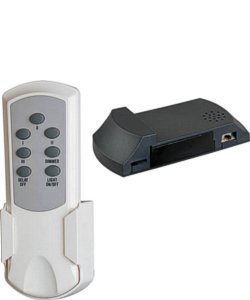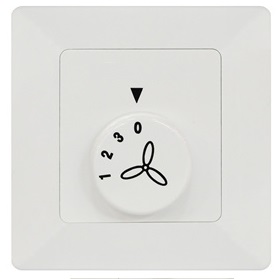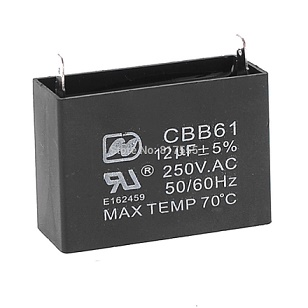CEILING FAN REPAIR SERVICES (AC & DC Fan)
We specialized in ceiling fan repair and ceiling fan services
- Replacement of Ceiling fan remote control unit
- Ceiling fan pull string speed regulator
- Ceiling fan light pull switch
- DC Fan Repair - PCB Receiver Board
- Wobbly/Shaking Fan
- Noisy Fan
- Safety and regular service and check
Crestar Fan, Amasco Fan, KDK Fan, Alpha Fan, Fanco Fan, Elmark Fan Haiku Fan DC Fan
We specialized in ceiling fans balancing and check and repair work. Ceiling fans components will wear out at some point due to prolong usage which will require it to be repaired or replaced. Getting a new ceiling fan replacement itself can cost substantially more as compared to having it repaired, which is why it is more cost efficient to have a ceiling fan repaired.
Power Electrical Repair Services has more than 10 years of experience in ceiling fan troubleshooting and repair works. We specialized in repairing ceiling fans. Most ceiling fan can be repaired, do our part to REPAIR - REDUCE - REUSE
Do check out our review page.Reviews https://www.powerelectrical.com.sg/reviews/
Commonly Asked Questions
Q1. Which ceiling fan height is suitable for my ceiling?
The minimum height from floor to blade must be at least 2.4m
Please use the length from Ceiling to Blade as reference
E.g. If your ceiling height is 3m. 3m - 23.7cm (Blade to ceiling) =2.77M (floor to blade)
Q2. Why my fan wobble? Wobbly Ceiling Fan? Shaking Ceiling Fan?
Over time, due to constant rotation and moving parts, is not uncommon for your ceiling fan to wobble a little more than usual.
Fan wobbling is largely due to:
- Loose fan blade
- Unsecure/loose mounting screws
- Fan mounting bracket loose
- Fan rod mounting screw worn-out
- Fan blade Dented
Q3 Do I need regular servicing for my ceiling Fan. Like my air-conditioner?
The simple answer is No. Ceiling Fans are maintenance free. And is strongly not advisable to oil your ceiling fan. However, if you notice your ceiling fan is behaving abnormally, loud noise, wobbly. Stop using it immediately and have your ceiling fan checked. Ceiling fan blade dislodge is a very common issue.
Q4 Squeaking sound, knocking sound and humming sound.
Due to wear and tear, is common for your ceiling fan to produce some very annoying and disturbing sound that can drive you crazy or disrupt your good night sleep. Good news is most of these annoying sound can be fixed, but some is beyond economical repair. For fan less than 8 years old, squeaking sound is usually fixable. However for older fans, squeaking is usually due to worn out ball bearings that cannot be fixed (can only be changed in factory)
Q5. What is the difference between AC and DC Fan?
When Ceiling Fans are first introduced, all ceiling fan (including standing and wall fan) runs on AC (Alternating Current 230V) motor. AC Fan design can be a little old fashion but they are robust and built to last. However, in recent years say beginning of 2015, DC (Direct Current 12V-30V) Ceiling Fan are launched in the market. DC Fan design and much sleeker, quieter and more energy efficient up to 50% as compared to AC Ceiling Fan. I have a section below comparing the pros and cons of AC vs DC Fan.
Common Ceiling Fan Problem
- Ceiling Fan Turning at Slow Speed is due to faulty internal electrical/electronic components
- Wobbly Ceiling Fan - Fan blade loosen
- Shaking Ceiling Fan - Bracket not secured properly
- Ceiling Fan Remote Control Not Responding check your battery and remote receiver
- Ceiling Fan Light Switch Not Working due to faulty light switch or loose wiring connection
- Ceiling Fan Speed Regulator unable to regulate speed, speed switch faulty or wiring issues/Fan Controller board (PCB)
- Ceiling Fan Cranking Noise usually due to worn out ball bearings or fan coil issues
- Ceiling Fan Shaking or Unbalance due to fan blades unbalance or improper mounting of ceiling bracket
COMPARING AC and DC Fan
1. Pricing
Over the years DC Fan pricing has dropped signicantly. Largely due to the high demand that have driven down the production cost. For entry level DC and AC fan you is available around >$200 without installation. Whereas for some designer models it can go as high as over $1000. With the increasing demand and push for DC Fan, i foresee the pricing for AC fan will start to creep upwards. Making DC Fan the de facto choice for Ceiling Fan
AC Fan: 5/5 DC: Fan 5/5
2. Durability - Repair and Servicing
AC Fan having been around in the market for a longer time, thus more spare parts and experienced technicians available. The repair cost for AC is much lower as compared to DC Fan. DC motor speed is fully regulated by active components using PWM (pulse wave modulation), therefore, when there is any faults, the complete PCB receiver controller board need to be replaced, which tends to be more costly.
AC Fan Repair: 4/5 DC Fan Repair 2.5/5
AC Ceiling Fan works with lesser parts and simpler mechanism as compared to DC Ceiling Fan. Lesser parts = Lesser problem. Typically a AC Ceiling Fan can last up to 8 years and some cases up to 20 years depending on the manufacturer. Whereas DC Fan relies heavily on electronics components which tends to break down more easily. I have feedbacks from customers DC Ceiling fan breaks down a couple of times in 18 months!
Durability:AC Fan: 5/5 DC Fan: 3/5
3. Energy Efficiiency Power Consumption
AC Ceiling Fan operates around 65W and a DC Ceiling Fan operates around 30W. That's around more than 50% more energy efficient. Lets say current tariff is $0.20KW/h and you on your fan from 11pm to 7am in the morning - 8 hrs (Excluding light usage)
|
No hr Usage |
Cost |
|
|
AC Ceiling Fan (65W) |
8 hours |
65 x 8 x .0002 = $0.104 |
|
DC Ceiling Fan (30W) |
8 hours |
30 x 8 x .0002 = $0.048 |
Cost Saving AC Fan: 4.5/5 DC Fan: 5/5
Although >50% saving sound a lot, but you actually only save $1.68 a month. Probably the same price as a cup of coffee!
4. Design and Sound Noise Level
In terms of design, we have to give DC fan 2 thumbs up. For many years AC Fan has been struggling to come out with nice sexy design. But due to the bulky AC Motor, they are restricted by their ability to make it smaller, lighter and sleek. I personally find AC fan find bulky and clumsy.
Fan Design AC Fan 3/5 DC Fan 5/5
When come to motor sound (excluding bearing worn out noise) DC fan is definitely much quieter compared to AC Fan as DC Motors are brushless working on magnets to drive the motors. Over time, AC motor (which requires servicing) will create a humming sound that can be rather annoying. If you are a light sleeper, DC fan is definitely a better choice.
Noise level AC Fan 3/5 DC Fan 5/5
Ceiling Fan Parts Availiable
1. Ceiling Fan Pull Switch Speed Regulator
String pull switch speed regulator 1-2-3
2. Ceiling Fan Remote Control Unit (Receiver and Transmitter) AC and DC Fan
3. Ceiling Fan Wall Speed Regulator (AC Fan Only)
4. Ceiling Fan Capacitor (AC Fan Only)
Q1. Which ceiling fan height is suitable for my ceiling?
The minimum height from floor to blade must be at least 2.4m
Please use the length from Ceiling to Blade as reference
E.g. If your ceiling height is 3m. 3m - 23.7cm (Blade to ceiling) =2.77M (floor to blade)
Q2. Why my fan wobble? Wobbly Ceiling Fan? Shaking Ceiling Fan?
Over time, due to constant rotation and moving parts, is not uncommon for your ceiling fan to wobble a little more than usual.
Fan wobbling is largely due to:
- Loose fan blade
- Unsecure/loose mounting screws
- Fan mounting bracket loose
- Fan rod mounting screw worn-out
- Fan blade Dented
Q3 Do I need regular servicing for my ceiling Fan. Like my air-conditioner?
The simple answer is No. Ceiling Fans are maintenance free. And is strongly not advisable to oil your ceiling fan. However, if you notice your ceiling fan is behaving abnormally, loud noise, wobbly. Stop using it immediately and have your ceiling fan checked. Ceiling fan blade dislodge is a very common issue.
Q4 Squeaking sound, knocking sound and humming sound.
Due to wear and tear, is common for your ceiling fan to produce some very annoying and disturbing sound that can drive you crazy or disrupt your good night sleep. Good news is most of these annoying sound can be fixed, but some is beyond economical repair. For fan less than 8 years old, squeaking sound is usually fixable. However for older fans, squeaking is usually due to worn out ball bearings that cannot be fixed (can only be changed in factory)
Q5. What is the difference between AC and DC Fan?
When Ceiling Fans are first introduced, all ceiling fan (including standing and wall fan) runs on AC (Alternating Current 230V) motor. AC Fan design can be a little old fashion but they are robust and built to last. However, in recent years say beginning of 2015, DC (Direct Current 12V-30V) Ceiling Fan are launched in the market. DC Fan design and much sleeker, quieter and more energy efficient up to 50% as compared to AC Ceiling Fan. I have a section below comparing the pros and cons of AC vs DC Fan.




